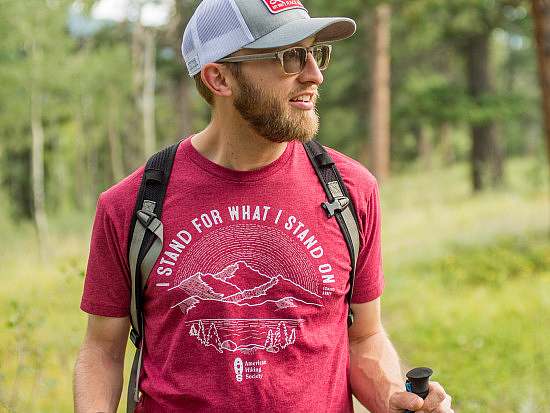Backpacks – Fit and Features
Click here for a printer-friendly PDF
Carry everything you need for your hike.
Unless you’ve got some big pockets, every hiker needs a backpack to carry the 10 Essentials with them on the trail. Like your boots, backpacks come in all shapes, sizes, and variety enough to suit every hiker. Backpacks can come in either internal frame or external frame form.
Daypack – These packs are the smallest of the backpack family. You probably already own one in the form of a book bag for school or whatever you carry on the way to work. Lightweight and usually lacking a hip belt, most daypacks aren’t fit for a several day excursion. However, they are perfect for stuffing with the 10 Essentials, a camera, and binoculars.
External frame – Some hikers like these packs since they generally have several organized compartments and additional gear can be strapped to the outside frame, making the pack more customizable. Since the pack is not nestled snugly against your back, external frames are considered more breathable. External frame packs are also quick to adjust. The trade off is that they tend to be less comfortable and lashing items to the outside is inconvenient and prone to weight distribution issues.
Internal frame – Today’s typical backpacks, these backpacks are made of one large compartment and a few small caches for easy access to things such as maps, water, and snacks. The support system is heavily padded, and the internal frame nestles right against your back for maximum comfort. Finding specific items inside your pack in a quick pinch isn’t always easy, however, since almost everything is inside the one main compartment.
How to wear your backpack
When putting on your pack, loosen all the straps. First tighten the hip belt (which should be on your hips, not above them), and then the shoulder straps. The padded portion of your shoulder straps should contour your shoulders without gaps. Remember: the shoulder straps don’t support the weight of a backpack, but serve to keep the pack near your body.
Next, adjust the load lifters – those straps that are at your shoulder and connect near the upper part of the pack. These straps should be at about a 45 degree angle. Finally, adjust the load stabilizer straps on the hip belt (at the back of the belt). Your sternum strap should not be tight, but simply help keep the shoulder straps in position. If purchasing a new pack, be sure to walk around the store with the pack on and with weight inside of it.



